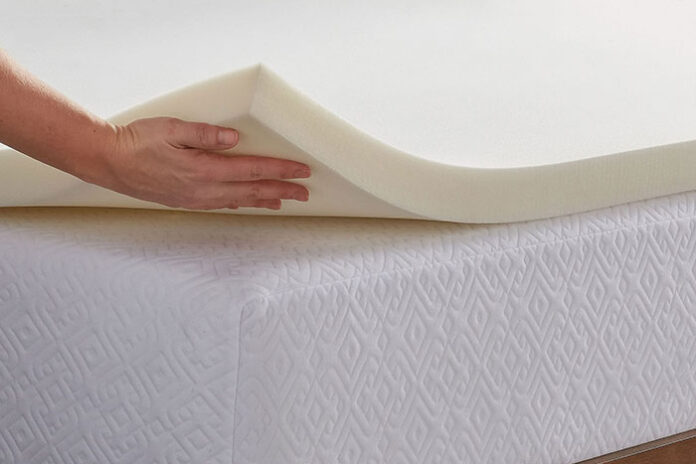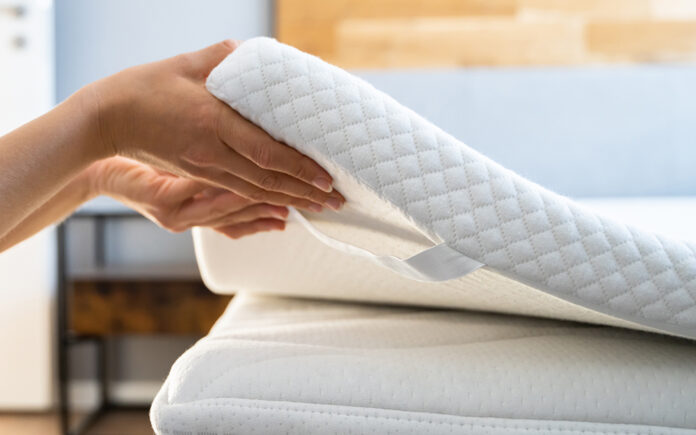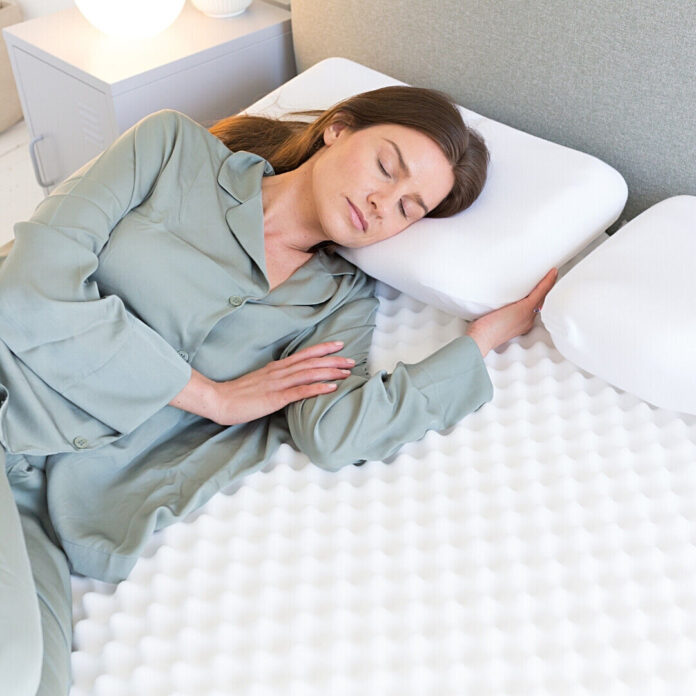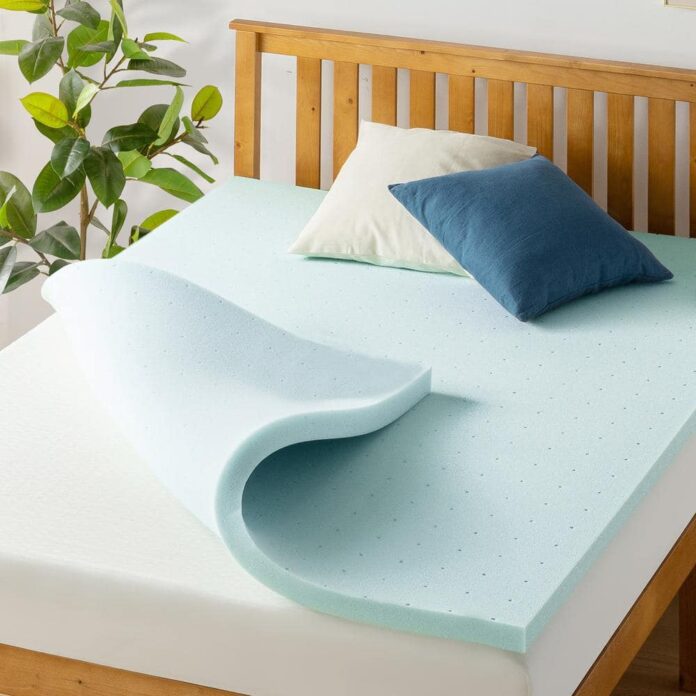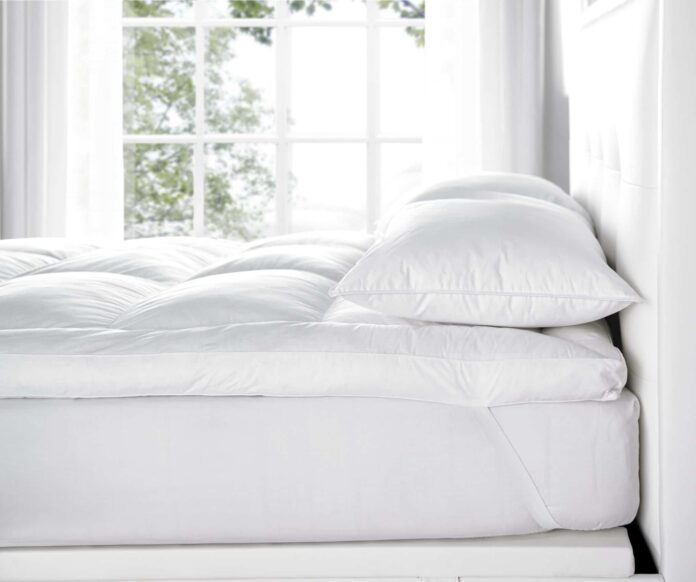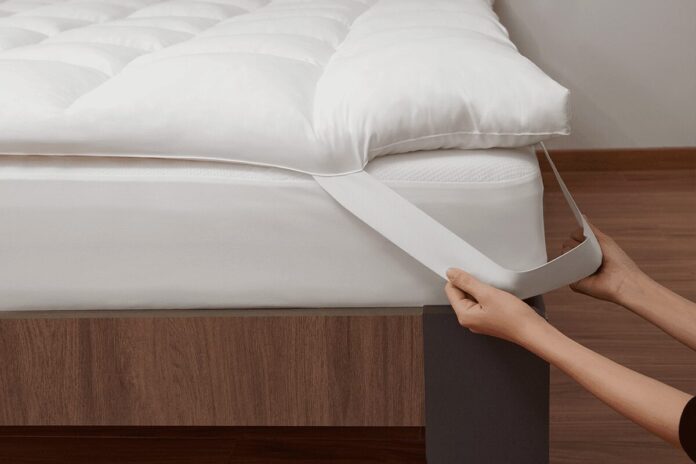A mattress topper is essentially an additional layer designed to be placed on top of an existing mattress, aiming to enhance its comfort, support, and sometimes even its thermal properties.
While primarily utilized to breathe new life into older mattresses or adjust the firmness level for a more personalized sleep experience, the question of their overall benefit remains.
This exploration will dissect the myriad of ways a topper can influence sleep health, comfort, and longevity of the mattress itself.
Through a balanced lens, we’ll navigate the seas of advantages and potential drawbacks, equipping you with the knowledge needed to decide if this bedding accessory aligns with your sleep preferences and needs.
Pros of Sleeping on a Mattress Topper
- Source: mattressonline.co.uk
The addition of a mattress topper to your bedding setup can significantly enhance the quality of your sleep by offering improved comfort and support.
This is especially beneficial for those whose current mattress no longer meets their comfort needs due to wear and tear or changes in personal health.
A topper can provide a cost-effective solution to improve mattress comfort, offering an additional layer that can help alleviate pressure points, support proper spinal alignment, and cater to personalized sleep preferences.
Moreover, toppers come in a variety of materials—each with its own set of benefits, such as memory foam for pressure relief and latex for a balance of support and durability.
Beyond personal comfort, a topper acts as a protective layer, potentially extending the lifespan of the mattress beneath by shielding it from direct body wear, sweat, and spills.
Enhanced Pressure Relief
- Source: ebay.com
For individuals experiencing joint pain or back issues, the strategic selection of a mattress topper can be transformative, offering enhanced pressure relief and a gentler sleep surface.
The ability to distribute body weight evenly across the mattress surface can significantly reduce pressure points, commonly found in the hips, shoulders, and knees, that lead to discomfort and disrupted sleep.
This can be particularly life-changing for side sleepers or those with chronic pain conditions, as the additional cushioning and tailored support can directly impact sleep quality and daytime well-being.
Moreover, this bespoke approach to bedding can assist in maintaining a neutral spine position throughout the night, further contributing to a restful sleep and minimizing the risk of waking with stiffness or pain.
Cons of sleeping on a Mattress Topper
Despite the clear benefits, there are also considerations to be mindful of when adding a topper to your sleep setup.
Not all mattresses are well-suited to the addition of a topper; for example, a mattress that is already at the end of its lifespan and sagging significantly may not benefit from a topper, as it cannot compensate for the underlying structural issues.
Additionally, the market’s vast array of topper options means that quality and suitability can vary greatly.
A poorly chosen topper can lead to uneven support, potentially exacerbating discomfort instead of alleviating it. Some materials, particularly dense memory foams, may trap body heat, leading to an uncomfortably warm sleep environment for those prone to overheating.
Memory Foam Toppers
- Source: homedepot.com
Memory foam toppers are renowned for their contouring properties, offering personalized support by adapting to the sleeper’s body shape.
This material excels in pressure relief and can significantly reduce motion transfer, making it an excellent choice for couples. However, memory foam’s density can also be its drawback, as it may retain heat and cause discomfort for hot sleepers.
Newer gel-infused varieties attempt to mitigate this by promoting better airflow and temperature regulation.
Latex Toppers
Latex toppers offer a unique blend of support and durability, with a naturally responsive feel that doesn’t sink in too deeply.
Ideal for those seeking a firmer sleep surface, latex is also antimicrobial and hypoallergenic, making it suitable for allergy sufferers.
However, its higher price point and the firmness it provides may not be for everyone, particularly those who prefer a plush sleeping experience.
Down and Feather Toppers
- Source: thehotelbedcompany.com
For a luxurious, cloud-like feel, down and feather toppers are unmatched. They provide a soft, enveloping comfort that can make any mattress feel more opulent.
However, they may not offer the support needed by those with back pain or other specific support requirements.
Additionally, potential allergens and the need for regular fluffing to maintain loft can be drawbacks for some users.
Wool Toppers
Wool toppers stand out for their natural temperature-regulating properties, offering warmth in the winter and breathability in the summer.
Their moisture-wicking capabilities also contribute to a comfortable sleep environment.
While wool provides moderate support and cushioning, its primary appeal lies in its thermal and moisture management benefits, making it an excellent choice for those valuing natural materials and year-round comfort.
Choosing the Right Mattress Topper
- Source: yours.co.uk
Selecting the ideal topper requires considering various factors, including your preferred sleeping position, any specific health concerns, and personal comfort preferences.
Side sleepers might benefit from a softer, more contouring option like memory foam, which can alleviate pressure on the hips and shoulders, while back or stomach sleepers may prefer the firmer support of latex.
The thickness and firmness of the topper also play critical roles in achieving the desired comfort level and support.
Additionally, budget considerations and material preferences should guide your decision, balancing the need for comfort with the importance of investing in a durable, high-quality product that aligns with your values, whether they skew towards luxury, eco-friendliness, or hypoallergenic properties.
Maintenance and Care Tips
To ensure the longevity and performance of your topper, regular maintenance is essential.
Rotating and flipping the topper (if the design allows) can promote even wear and extend its useful life.
Adhering to the manufacturer’s cleaning instructions is crucial for maintaining its condition and hygiene. Utilizing a mattress protector can also safeguard against spills, stains, and the accumulation of dust and allergens, contributing to a cleaner, healthier sleep environment.
Impact on Sleep Quality
- Source: lux-review.com
The influence of a mattress topper on sleep quality cannot be understated.
By providing additional comfort, support, and pressure relief, a topper can significantly improve the quality of sleep, leading to better overall health and well-being.
Personal testimonials and user reviews often highlight the transformative effect a topper can have, from alleviating chronic pain to enhancing sleep depth and duration.
While individual experiences vary, the consensus suggests that a carefully chosen topper can make a substantial difference in sleep comfort and quality.
Cost Considerations
When weighing the cost of a mattress topper against that of a new mattress, the topper often emerges as a cost-effective way to enhance an existing mattress’s comfort and extend its lifespan.
While the initial investment in a high-quality topper can be significant, it is generally lower than purchasing a new mattress, making it an attractive option for those looking to improve their sleep experience without the financial outlay of a complete mattress replacement.
Conclusion
- Source: coopsleepgoods.com
Navigating the decision of whether to add a mattress topper to your bedding ensemble requires careful consideration of its pros and cons.
While the benefits of enhanced comfort, support, and extended mattress life are compelling, potential drawbacks like suitability for specific mattresses and individual material sensitivities must also be weighed.
By taking into account personal sleep preferences, health concerns, and budget, alongside maintenance and environmental considerations, you can make an informed choice that best suits your needs.
We invite readers to share their experiences or pose questions in the comments section, fostering a community of informed and engaged sleep enthusiasts.
